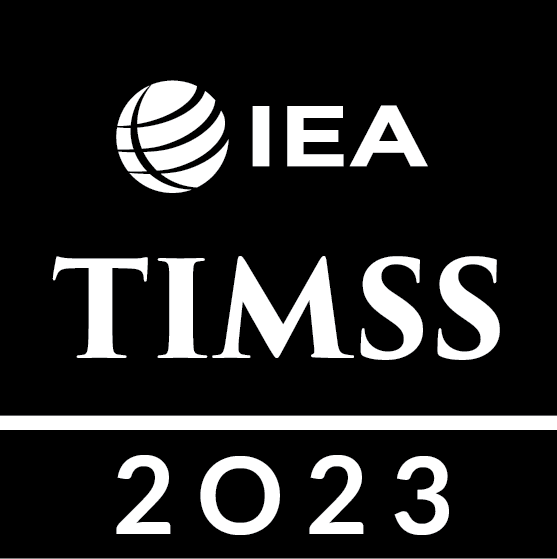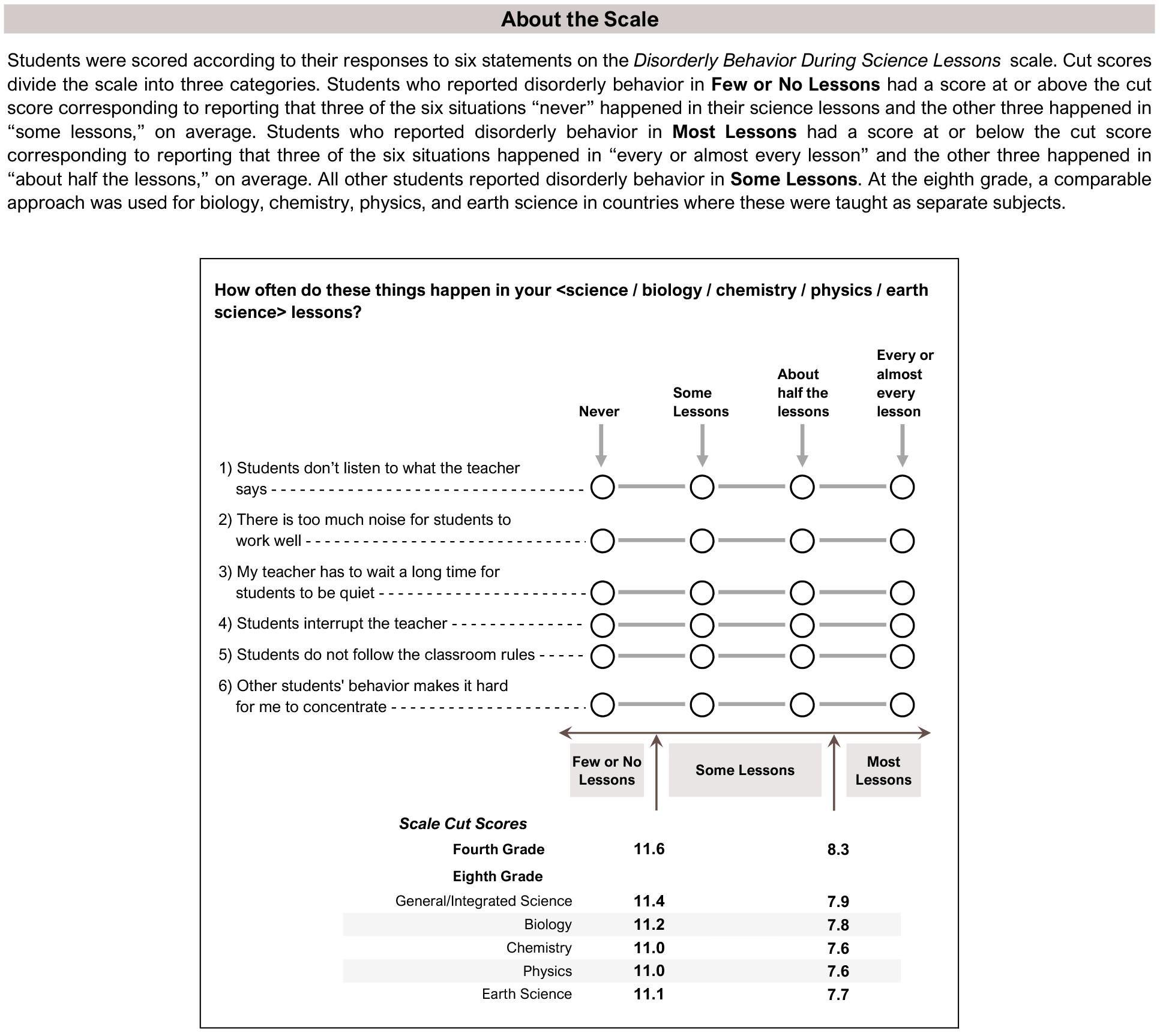Disorderly Behavior Science
Classroom Environment
Disorderly Behavior During Science Lessons
Students’ reports of disorderly behavior during science classes have a negative relationship with average science achievement: experiencing more frequent disruptive behavior is associated with lower average achievement. The TIMSS 2023 Disorderly Behavior During Science Lessons scale (Exhibit 5.3.4) includes items that asked students about the frequency of experiencing different types of disruptions during science lessons. In countries where eighth-grade science is taught as separate subjects, students provided answers for each science subject in which they were enrolled (biology, chemistry, physics, earth science). Based on their responses, students were assigned into one of three categories on the scale: experiencing disorderly behavior during “few or no lessons,” “some lessons,” or “most lessons.” Higher scale scores indicate less disruption than lower scale scores.
Internationally, 21 percent of fourth-grade students, on average, reported disorderly behavior in “few or no” science lessons, 59 percent reported disorderly behavior in “some” science lessons, and 20 percent reported disorderly behavior in “most” science lessons. There was a negative association between the frequency of disorderly behavior and average science achievement for fourth-grade students internationally. As shown in Exhibit 5.3.5, there was a 34-point difference in average science achievement between fourth-grade students who reported disorderly behavior in “few or no lessons” and those who reported disorderly behavior in “most lessons” (510 vs. 476), with average achievement for students who reported disorderly behavior in “some lessons” in between (497).
The distribution of eighth-grade students across the three scale categories is similar for students who took science as an integrated subject and students who were enrolled in separate science subjects. In integrated science, 28 percent of students on average reported disorderly behavior in “few or no” science lessons, 56 percent reported disorderly behavior in “some” science lessons, and 16 percent reported disorderly behavior in “most” science lessons. For biology, chemistry, physics, and earth science, these percentages ranged from 29 to 35 percent of students reporting disorderly behavior in “no lessons,” 52 to 58 percent of students reporting disorderly behavior in “some lessons,” and 13 to 14 percent of students reporting disorderly behavior in “most lessons,” on average. Internationally for eighth-grade students across all science subjects, there was a negative association between the frequency of disorderly behavior and average student science achievement (Exhibits 5.3.6a to 5.3.6e). Integrated science students who reported disorderly behavior in “few or no lessons” had an average science achievement 32 points higher than those who reported disorderly behavior in “most lessons” (494 vs. 462). Average science achievement for eighth-grade students who reported disorderly behavior in “some lessons” was 481. Results for the separate science subjects follow a similar pattern.
Read More
Disorderly Behavior During Science Lessons
Few or No Lessons
Some Lessons
Most Lessons
This TIMSS context questionnaire scale was established in 2023 based on the combined response distribution of countries that participated in TIMSS 2023. To provide a point of reference for country comparisons, the scale centerpoint of 10 was located at the mean of the combined distribution. The units of the scale were chosen so that 2 scale score points corresponded to the standard deviation of the distribution. The separate scales for biology, chemistry, physics, and earth science were each established in 2023 using a comparable approach.
( ) Standard errors appear in parentheses. Because of rounding some results may appear inconsistent.
An “r” indicates data are available for at least 70% but less than 85% of the students.
An “s” indicates data are available for at least 50% but less than 70% of the students.
An “x” indicates data are available for at least 40% but less than 50% of the students—interpret with caution.
A “y” indicates data are available for less than 40% of the students.
A dash (-) indicates comparable data not available.
Average achievement in exhibits 5.3.6a – 5.3.6e is overall science achievement.
Scroll Up

